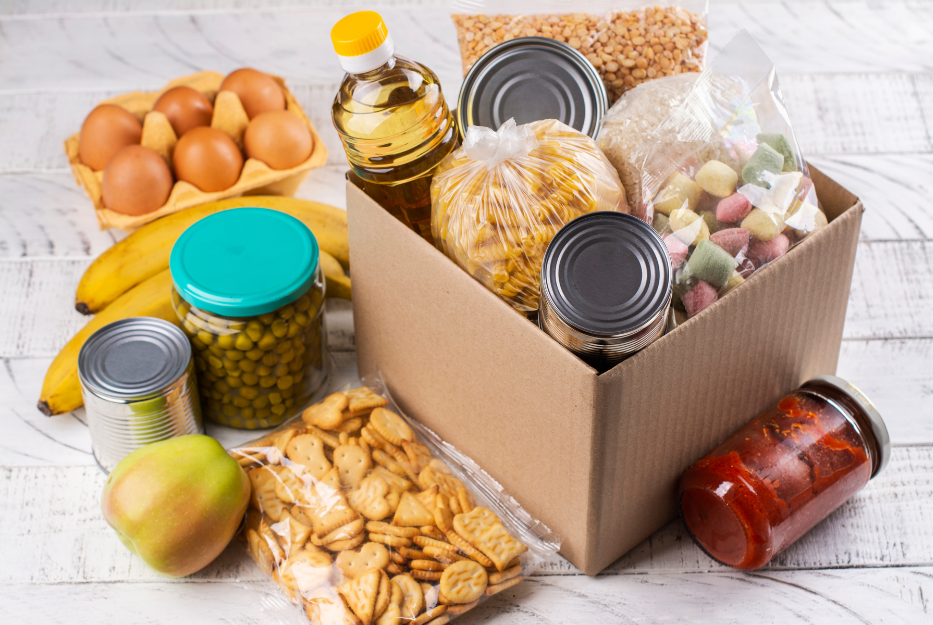How to Access Food Banks in Canada (step-by-step guide)

**Please review the disclaimer at the end of this document before reading or using this guide.
Accessing food banks can be a vital resource for new immigrants in Canada, especially during the initial transition period. Food banks provide free groceries and essential items to individuals and families in need. This guide provides information on how new immigrants can access food banks in Canada.
Step 1: Understand How Food Banks Operate
- What are Food Banks?
- Food banks are non-profit organizations that collect, store, and distribute food to people in need. They provide a variety of groceries, including fresh produce, canned goods, dairy products, and sometimes personal care items.
- Who Can Use Food Banks?
- Food banks are available to anyone experiencing food insecurity. There are no strict eligibility criteria, but some may require proof of address or identification.
Step 2: Find a Local Food Bank
- National Resources:
- Food Banks Canada: The national organization representing food banks across the country. They provide a food bank locator on their website.
- Website: Food Banks Canada
- Local Listings:
- Use the food bank locator tool on the Food Banks Canada website to find food banks in your area. Enter your postal code to see a list of nearby food banks.
- Community Organizations:
- Many local community centers, churches, and non-profit organizations operate food banks or have information on where to find them.
Step 3: Understand the Requirements
- Identification:
- Some food banks may ask for a piece of identification (ID) for each household member. Acceptable IDs include a passport, driver’s license, health card, or any other government-issued ID.
- Proof of Address:
- You may be asked to provide proof of address, such as a utility bill or lease agreement.
- Income Information:
- While not always required, some food banks might ask for information about your income or financial situation to better understand your needs.
Step 4: Register with a Food Bank
- Initial Registration:
- When you visit a food bank for the first time, you may need to complete a registration form. This helps the food bank track usage and ensure they can meet your needs.
- Appointment vs. Walk-In:
- Some food banks require appointments, while others accept walk-ins. Check the specific requirements of the food bank you plan to visit.
- Frequency of Visits:
- Food banks often have guidelines on how frequently you can visit (e.g., once a week or once a month). Be sure to understand these guidelines to plan your visits accordingly.
Step 5: Visit the Food Bank
- What to Bring:
- Bring your ID, proof of address, and any other required documents. Also, bring reusable bags or boxes to carry the food you receive.
- Arrival:
- Arrive at the food bank at the designated time if you have an appointment. If it’s a walk-in food bank, check their hours of operation and plan to arrive early if possible.
- Interaction:
- Be prepared to interact with volunteers and staff who may ask you about your dietary needs and preferences to better assist you.
Step 6: Additional Support Services
- Community Resources:
- Many food banks also provide information about other community resources, such as housing assistance, employment services, and health care.
- Hot Meal Programs:
- In addition to food banks, some organizations offer hot meal programs where you can get free prepared meals.
- Nutrition Education:
- Some food banks offer nutrition education programs to help you make the most of the food you receive and learn about healthy eating habits.
Step 7: Stay Informed
- Follow Updates:
- Follow your local food bank on social media or subscribe to their newsletters to stay informed about changes in hours, new services, and special events.
- Volunteer Opportunities:
- If you’re in a position to give back, consider volunteering at your local food bank. It’s a great way to integrate into the community and help others in need.
Accessing food banks in Canada can provide essential support for new immigrants during their transition period. By understanding how food banks operate, finding a local food bank, meeting the requirements, and visiting regularly, you can ensure you have access to necessary food and resources. Welcome to Canada, and remember that food banks are here to support you and your family.
**DISCLAIMER: This document was prepared based on information gathered from various online sources. While our aim is to provide accurate and helpful information to newcomers in Canada, Active Action cannot be held responsible for any actions, outcomes, or situations that may arise from the use of this document. We strongly recommend that you verify any details with official sources or relevant authorities if you have any doubts or uncertainties about any information provided in this document. If you have any specific questions about the information in this document, or if you notice any inaccuracies or missing information, please inform us immediately through the contact form. We will respond to you as soon as possible and/or update the information as necessary.


